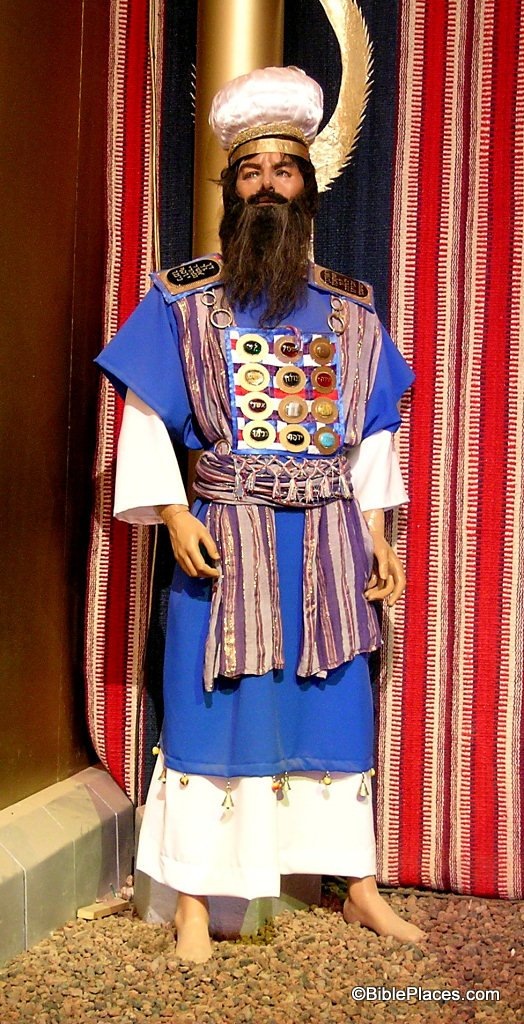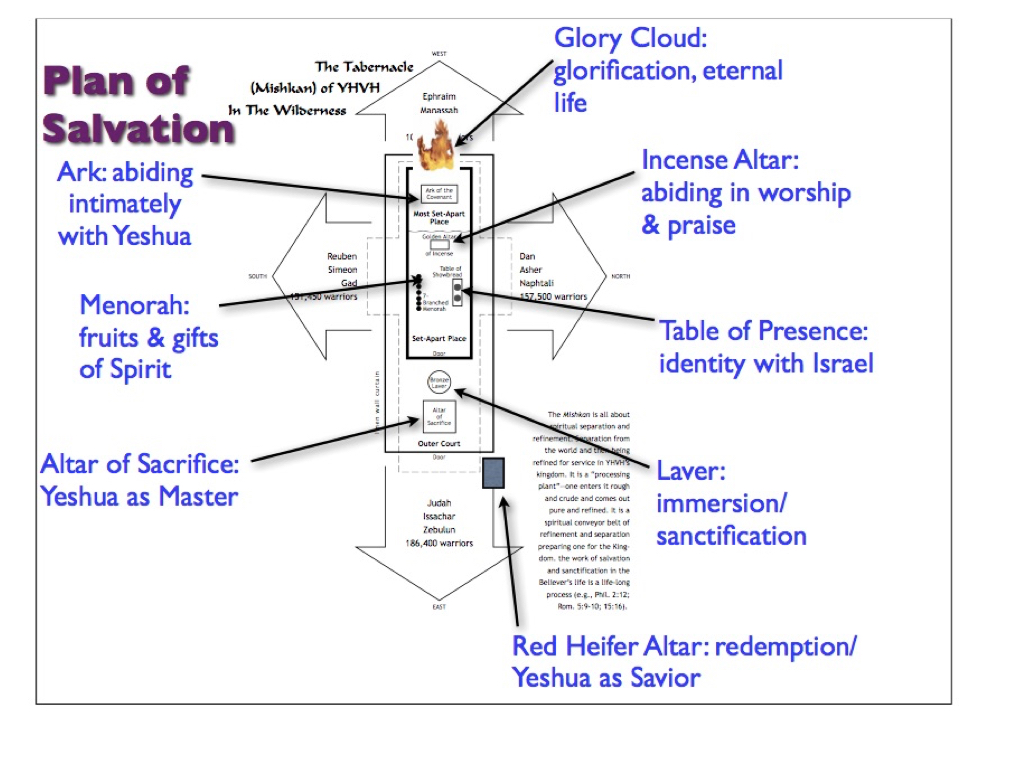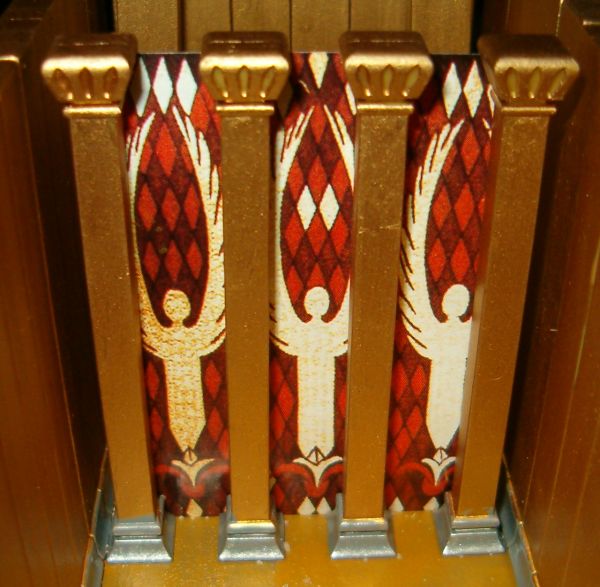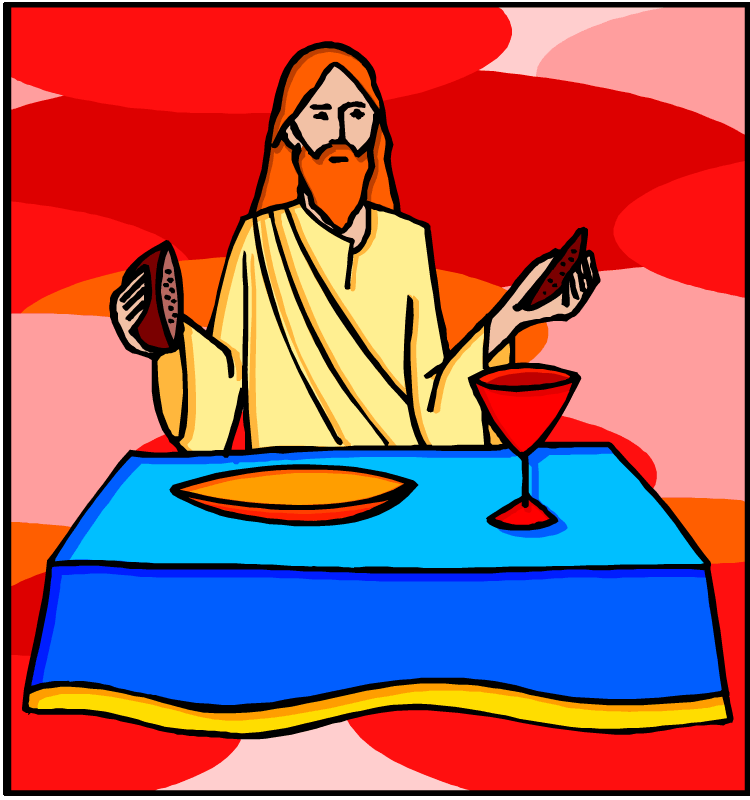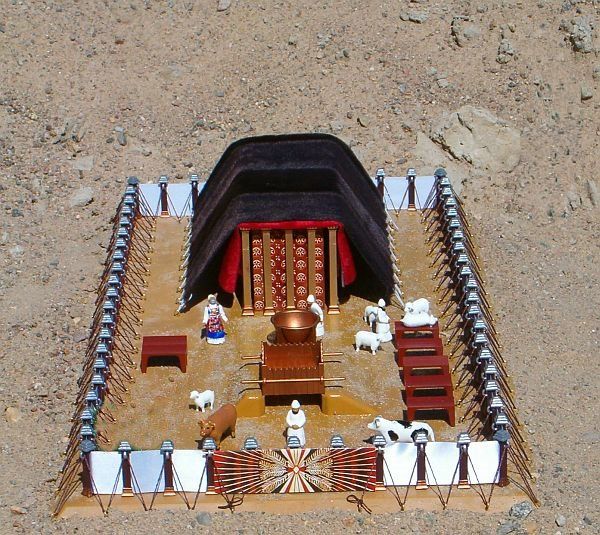Exodus 39:1, The holy garments for Aaron. The vestments of the high priest (kohen hagadol) are symbolic of the robes of righteousness that saints should be wearing in preparation for the return of the Messiah.
Gold symbolizes purity of heart. Blue symbolizes heaven and spirituality.
White linen pictures robes of righteousness, purity or sinlessness.
Red represents blood—the blood of Yeshua that cleanses us from sin.
The high priest wore a belt that represented truth according to Paul (Eph 6:14).
The white linen pants represented sexual purity. The white turban represented purity of thought and humility (the opposite of conceit).
The high priest also wore a gold crown inscribed with the words, “Kadosh l’YHVH” meaning “Set-Apart to YHVH.”
The dangling pomegranates attached to the hem of his robe represented the fruits of the Spirit of Elohim, which should be manifesting in the life of the saint. The golden bells, also attached to the hem of his robe, jingled when the high priest walked. These symbolized the righteous walk of the saint: people should hear and see our good spiritual fruits. All of our actions speak loudly and clearly as to who we are and what we believe. Also, Yeshua taught that our words reveal the true condition of our heart (Luke 6:45). How, then, do people really view us? What are we like when we are alone—our thought life and our words—our secret life? Is there a discrepancy between our secret and public lives? If so why? How set apart and righteous are we … in reality?
If YHVH has called us to be his set-apart priesthood, then hadn’t we better get busy cleaning up our act and start acting like one?
Jewish tradition tells us that a rope was tied to the leg of the high priest in Second Temple times so that while ministering in the innermost sanctuary of the temple if he was impure and YHVH struck him dead (as happened to Nadab and Abihu, the sons of Aaron, when they offered up strange fire) the corpse could be dragged out by the rope. This teaches us that we should view being righteous and set apart seriously. Remember Hebrews 12:14 which instructs us to, “Follow peace with all men, and holiness, without which no man will see the Master.”

